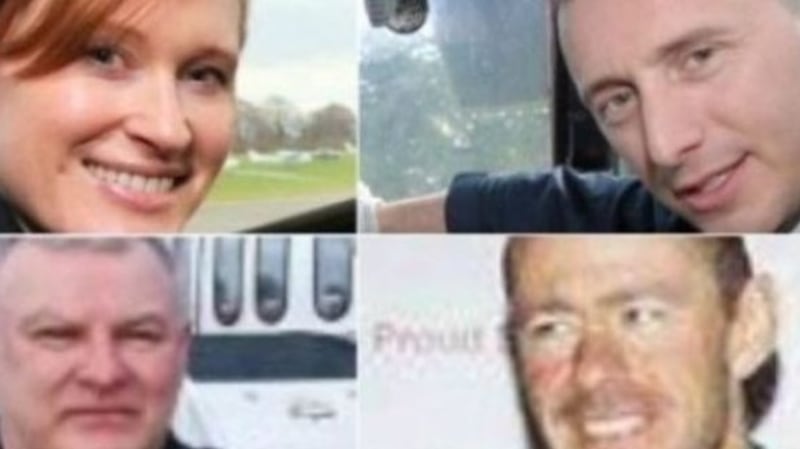North Mayo gardaí have confirmed that a helmet and lifejacket discovered on a beach on the Mullet peninsula belongs to one of the two missing crewmen from the Irish Coast Guard helicopter Rescue 116.
The helmet and lifejacket were attached, and the lifejacket had inflated when it was spotted by a member of the public near An Clochar, on the mainland east of the Inishkea islands, on Saturday.
Irish Coast Guard winchman Ciarán Smith and winch operator Paul Ormsby remain missing since the crash with the loss of four lives on March 14th off Blackrock island, 13 km west of the Mullet peninsula.
Supt Tony Healy of Belmullet Garda Station said it would take several days to confirm the ownership of the helmet and lifejacket, but confirmed that both items belonged to the helicopter crew.
Pilot Capt Dara Fitzpatrick was taken from the water south of Blackrock island over an hour after the crash and pronounced dead, and her helmet was found several days later. The body of her co-pilot Capt Mark Duffy was taken from the helicopter on the seabed by Naval Service divers on March 26th.
In spite of extensive air/sea searches, there has been no sign of the two winch crew, and memorial services were held for both in May and June respectively.
Supt Healy said that gardaí and Irish Coast Guard shore volunteers searched immediate coastal areas after the lifejacket and helmet were located, but gale force winds precluded any searches at sea.
“We are constantly doing spot checks with the Irish Coast Guard shore volunteers, and members of the public are vigilant, and this is what paid off this weekend,”he said.
“We will assess this new piece of evidence, as it is another step forward,and a significant step,”he said.
The lifejackets worn by the four crew had to be manually inflated, but Supt Healy said the lifejacket may have inflated when its cord snagged on something before being washed ashore.
The most recent concerted multi-agency search for the two missing men was in late July, when a weather window eased the swell which is almost constant around Blackrock island.
The Irish Lights ship Granuaile returned with the Marine Institute remotely operated vehicle (ROV) and technical team to survey seabed areas around the rock.

A fishing vessel fitted with a bespoke net had trawled areas around the island and in Blacksod Bay the previous week, with the assistance of the Garda Water Unit. A group of 25 Irish Underwater Council-approved club divers also searched Duvillaun to the south and the Inishkea islands to the north.
A 360-degree search of Blackrock island was previously conducted by Army mountaineers and Garda technical experts in April, while over 110 fishing vessels and RNLI lifeboats undertook a large scale sweep of over 8,500sq km of sea and some 170 trained club divers undertook a series of dives around Blackrock.
The Air Accident Investigation Unit (AAIU) and Garda inquiries into the crash are still continuing. The AAIU has already ruled out mechanical failure.
The AAIU interim report published last April recommended that all route guides used by search and rescue helicopters in Ireland should be reviewed and revaluated, as it appeared the R116 crew lacked vital information on their pre-programmed route to refuel at Blacksod.
The fact that none of the four crew were located by satellite beacons was also explored in the preliminary report.
The crew’s beacons had been installed in the same pouch as the GPS antenna, as per a service bulletin issued by the lifejacket manufacturer
However, the report notes the beacon manufacturer recommended a minimum separation distance of 30 centimetres between the GPS antenna and beacon to ensure the beacons functioned.
It recommends that the manufacturer of satellite locator beacons on Mk 44 lifejackets used by the search and rescue air crew should review “the viability of the installation provisions and instructions”.
CHC Ireland says that both recommendations have been “actioned”.











